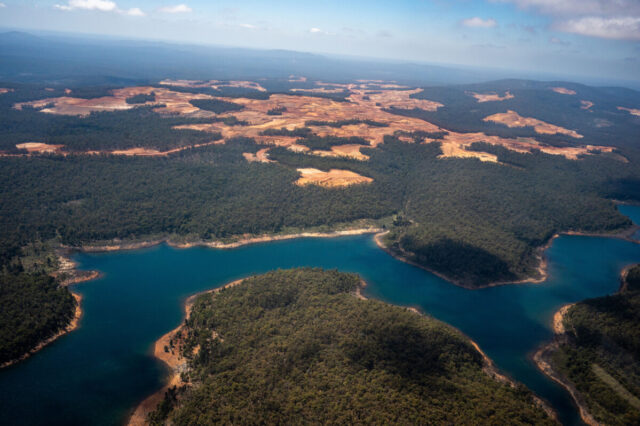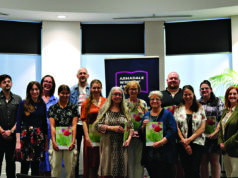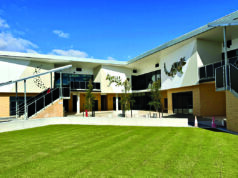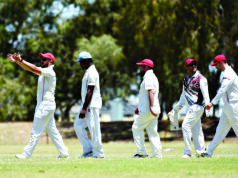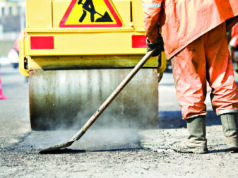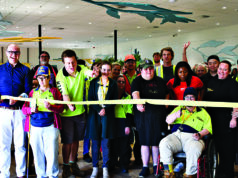The Jarrahdale Forest Protectors (JFP) have challenged Alcoa to a town hall Q&A, to get to the bottom of several points of contestation.
JFP’s chair Jan Star has taken issue with Alcoa’s response to the Leeuwin Group of Scientist’s campaign published in November across major media outlets which called for a cessation of mining along the Darling Range to “avert an extinction catastrophe”.
“Their refutation is a good example of public relations spin which JFP want to challenge,” Ms Star said.
“Public and political discourse is distorted when facts are cherry picked and, for this reason, we challenge Alcoa to defend their claims in a public forum, debating with representatives of our organisation and subject matter experts in the scientific world.”
Chief of her concerns regarding their response was Alcoa’s statement that they were one of very few mining companies in WA that has handed back rehabilitated land to the state government, and had received two certificates of acceptance for 1355ha of previously mined land in Jarrahdale.
“Their claim that they had handed back two areas totalling 1355ha is technically correct but my understanding is that this was because the Water Corporation wanted to conduct thinning trials in the Wungong catchment in order to see if more water could be obtained for the dam,” she said.
“To do this the state needed to obtain control of the land so released Alcoa from further obligation. It had little to do with their state of rehabilitation and at least some of it was early planting of eastern state eucalypts which one day will have to be removed and rehabilitated properly with local species.”
Ms Star said she was on the community reference group set up by Water Corp, and that the trial was ended without success.
A spokesperson from Alcoa has said the company had changed its practise of replanting with ‘hardy’ pines and eastern state natives in 1988, in line with scientific research, driven by Alcoa.
“Since 1988 only Northern Jarrah Forest species have been used in rehabilitation, and the science and practices for establishing a resilient forest ecosystem have been adjusted and refined since that time,” they said.
Ms Star said she also takes issue with Alcoa’s reiteration of the fact that they only mine a fraction of their 7000-square-kilometre lease.
“While Alcoa keep claiming that…the mining is in the high value bauxite area. As the [Leeuwin Group] scientists state, with the bauxite removed the future growth of the jarrah will never be the same,” Ms Star said.
“Alcoa has failed to mention that several of the scientists that signed the statement were the ones that did the scientific research for them over the last 40 to 50 years on rehabilitation and restoration of the original vegetation [which has] led them to declare the rehabilitation attempts a failure.
“One of the main reasons for failed rehabilitation is that mining operation have removed the three to five-metre-deep bauxite regolith that sits above granite bedrock.
“It is that spongy layer of bauxite that retains ground water to feed the roots of the King Jarrah trees that were once abundant in the area.
“The original forest built up over thousands of years to form a stable and self-managing vegetation complex of overstorey and understory species (an extremely biodiverse ecosystem) but now much of the plant, animal and birdlife is threatened or already extinct in the area.
“The rehabilitation is merely ‘a replanting of forest species’ that is vulnerable to fire, drought and invasive weeds and all these scientists are now agreed that with the lack of the regolith it can never recover its original complexity.”
Alcoa has refuted that the removal of bauxite prevents a jarrah forest from re-establishing.

“Claims that jarrah does not grow where bauxite has been removed have no scientific or evidentiary basis,” the Alcoa spokesperson said.
“We have jarrah trees in some of our rehabilitated areas dating more than 50 years, with growth rates of the species across previously mined areas following expected patterns of forest stand development.
“As the world moves towards a renewable future, more aluminium is required. Alcoa is committed to mining bauxite – which we refine into alumina that is used to smelt aluminium – in the most environmentally responsible ways possible, and we continue to research and develop systems, processes and technologies to make all areas of our operations more sustainable.”
Alcoa did not respond to the challenge set down for a town hall Q&A, but said: “We encourage anyone with an interest in our rehabilitation to join a public tour – tours are run regularly and details are available by contacting tourcentre@alcoa.com or (08) 95302400”.


